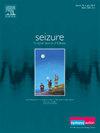Stereoelectroencephalography versus subdural electrodes for invasive monitoring of drug-resistant epilepsy patients: a systematic review and meta-analysis
IF 2.7
3区 医学
Q2 CLINICAL NEUROLOGY
引用次数: 0
Abstract
Introduction
Invasive monitoring for epilepsy surgery is critical for localizing epileptogenic zones. Stereoelectroencephalography (SEEG) and subdural electrodes (SDE) are two primary techniques used for this purpose. This meta-analysis aims to compare the effectiveness and safety of SEEG and SDE regarding various clinical outcomes in patients undergoing invasive epilepsy monitoring.
Methods
We conducted a systematic review and meta-analysis of studies comparing SEEG and SDE for invasive epilepsy monitoring. PubMed, Embase, and Cochrane Library databases were searched for relevant studies. Two reviewers performed data extraction and quality assessment through Cochrane's ROBINS-I tool independently. Statistical analyses were conducted using a random-effects model in R Studio.
Results
A total of 16 studies involving 3751 patients were included in the analysis, with 1750 who underwent SDE and 2001 in the SEEG group. There was no statistically significant difference between groups regarding seizure freedom at last follow-up (OR 1.05; 95 % CI 0.61–1.81; I2 = 56 %; p = 0.86). The SEEG group, however, was associated with lower incidence of complications (OR 0.50; 95 %CI 0.28, 0.91; I2 74 %; p < 0.01), fewer major bleeding events (OR 0.23; 95 %CI 0.11, 0.49; I2 0 %; p < 0.01), fewer post-operative neurological deficits (OR 0.39; 95 %CI 0.21, 0.73; I2 23 %; p < 0.05), and shorter operative time (MD -76.28 min; 95 %CI -101.86, -50.70; I2 92 %; p < 0.05).
Conclusion
SEEG and SDE are both effective in achieving seizure freedom for drug-resistant epilepsy patients undergoing invasive monitoring. SEEG may offer advantages in terms of safety and healthcare utilization, with fewer complications and shorter operative times. These findings support the growing adoption of SEEG as a preferred method for epilepsy surgery, though further prospective studies are needed to validate these results.
立体脑电图与硬膜下电极对耐药癫痫患者的侵入性监测:一项系统回顾和荟萃分析
有创监测癫痫手术是定位癫痫区至关重要。立体脑电图(SEEG)和硬脑膜下电极(SDE)是用于此目的的两种主要技术。本荟萃分析旨在比较SEEG和SDE对侵袭性癫痫患者各种临床结果的有效性和安全性。方法对SEEG和SDE用于侵袭性癫痫监测的研究进行系统回顾和荟萃分析。检索PubMed、Embase和Cochrane图书馆数据库查找相关研究。两名审稿人通过Cochrane的ROBINS-I工具独立进行数据提取和质量评估。使用R Studio中的随机效应模型进行统计分析。结果共纳入16项研究,涉及3751例患者,其中SDE组1750例,SEEG组2001例。最后随访时两组患者癫痫发作自由度差异无统计学意义(OR 1.05;95% ci 0.61-1.81;I2 = 56%;P = 0.86)。然而,SEEG组的并发症发生率较低(OR 0.50;95% ci 0.28, 0.91;I2 74%;p & lt;0.01),大出血事件较少(OR 0.23;95% ci 0.11, 0.49;I2 0%;p & lt;0.01),术后神经功能缺损较少(OR 0.39;95% ci 0.21, 0.73;I2 23%;p & lt;0.05),手术时间较短(MD -76.28 min;95% ci -101.86, -50.70;I2 92%;p & lt;0.05)。结论seeg和SDE对有创监测的耐药癫痫患者均能有效实现癫痫发作自由。SEEG可能在安全性和医疗保健利用方面具有优势,并发症更少,手术时间更短。这些发现支持SEEG作为癫痫手术的首选方法,尽管需要进一步的前瞻性研究来验证这些结果。
本文章由计算机程序翻译,如有差异,请以英文原文为准。
求助全文
约1分钟内获得全文
求助全文
来源期刊

Seizure-European Journal of Epilepsy
医学-临床神经学
CiteScore
5.60
自引率
6.70%
发文量
231
审稿时长
34 days
期刊介绍:
Seizure - European Journal of Epilepsy is an international journal owned by Epilepsy Action (the largest member led epilepsy organisation in the UK). It provides a forum for papers on all topics related to epilepsy and seizure disorders.
 求助内容:
求助内容: 应助结果提醒方式:
应助结果提醒方式:


